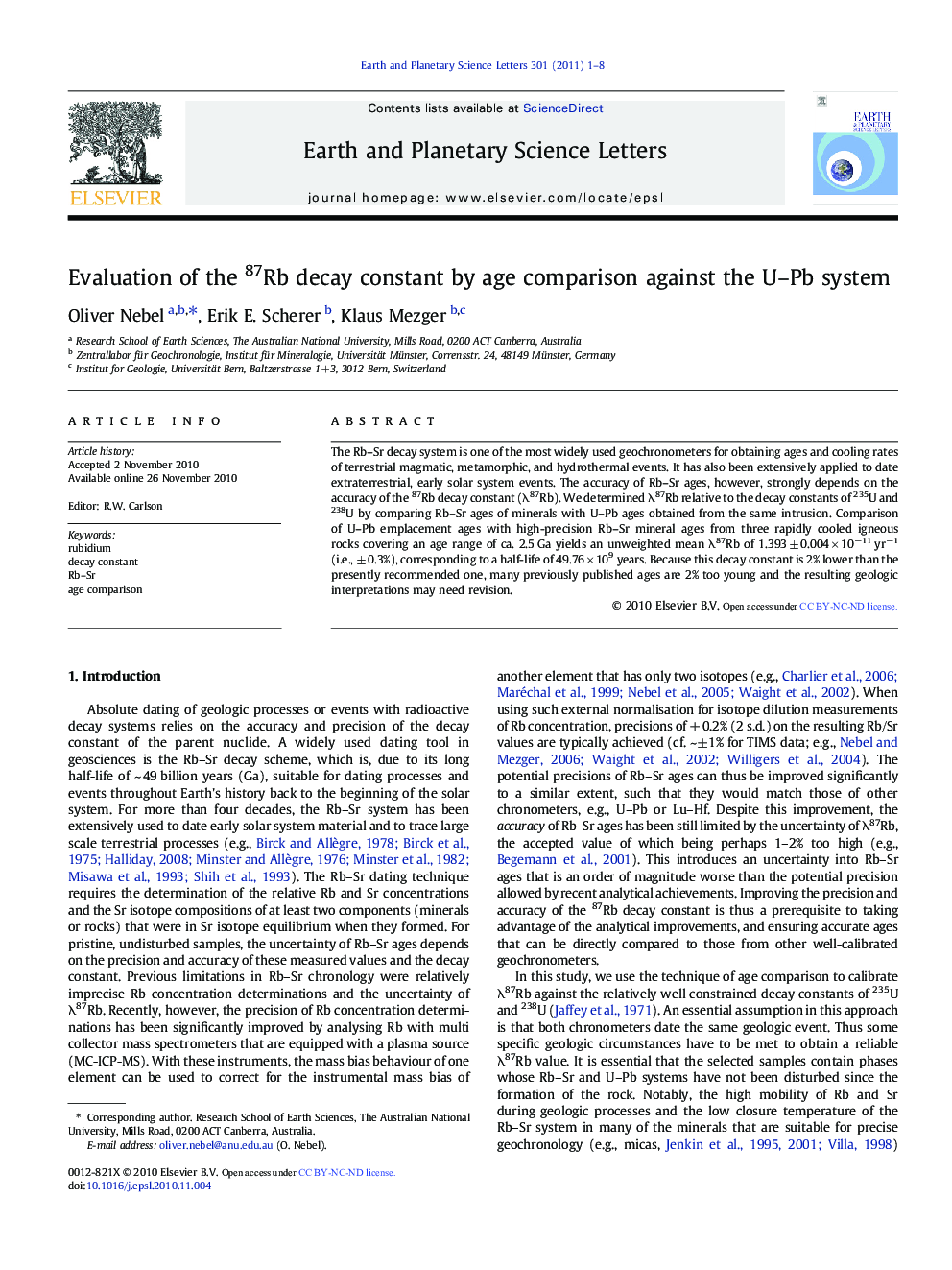| Article ID | Journal | Published Year | Pages | File Type |
|---|---|---|---|---|
| 6430824 | Earth and Planetary Science Letters | 2011 | 8 Pages |
The Rb-Sr decay system is one of the most widely used geochronometers for obtaining ages and cooling rates of terrestrial magmatic, metamorphic, and hydrothermal events. It has also been extensively applied to date extraterrestrial, early solar system events. The accuracy of Rb-Sr ages, however, strongly depends on the accuracy of the 87Rb decay constant (λ87Rb). We determined λ87Rb relative to the decay constants of 235U and 238U by comparing Rb-Sr ages of minerals with U-Pb ages obtained from the same intrusion. Comparison of U-Pb emplacement ages with high-precision Rb-Sr mineral ages from three rapidly cooled igneous rocks covering an age range of ca. 2.5 Ga yields an unweighted mean λ87Rb of 1.393 ± 0.004 Ã 10â11 yrâ1 (i.e., ± 0.3%), corresponding to a half-life of 49.76 Ã 109 years. Because this decay constant is 2% lower than the presently recommended one, many previously published ages are 2% too young and the resulting geologic interpretations may need revision.
Research Highlights⺠Age comparison experiments suggest that the 87Rb decay constant is 2% lower than the currently accepted value. ⺠Our value of 1.394 ±0.004 Ã10-11yr-1 agrees with the results of the most recent age comparisons and the latest beta counting experiment. ⺠Ages calculated with the currently accepted value need revision and will become older by 2%.
